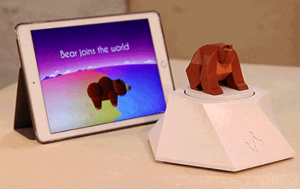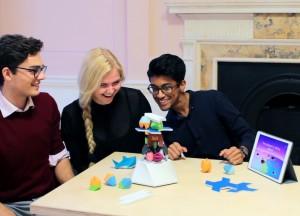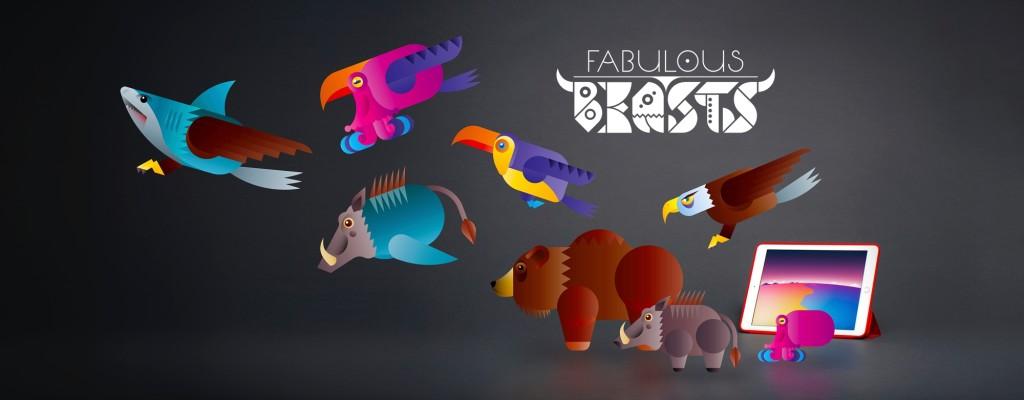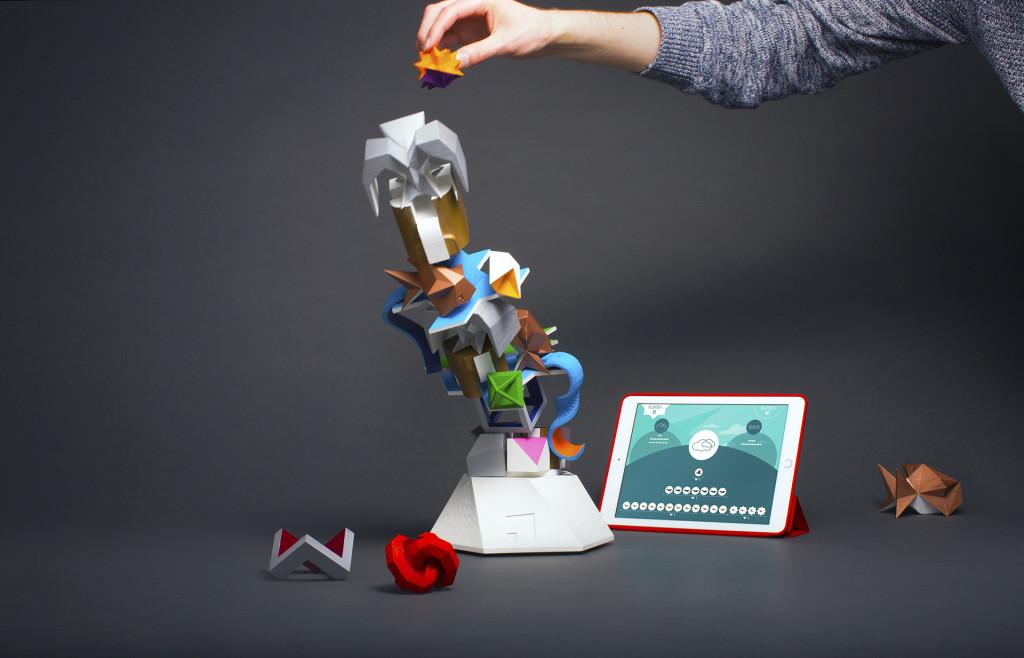If you’re a gamer, you probably lean towards either tabletop or video games. They’re two very different worlds, but a new startup has found a way to combine the two – in a really fabulous way. London-based game studio Sensible Object presents Fabulous Beasts, a tabletop/digital hybrid game that combines Jenga, 3D printed beasts, electronic sensors, and godlike powers.
The game consists of 24 3D printed stackable pieces or “artifacts,” designed for the purpose of building a tower. Most of them are in the shape of animals such as warthogs, bears, sharks, etc. One to five players take on the role of gods, who work together to build a world by stacking the artifacts. Sounds pretty basic – but the unique part is the sensor that brings that physically constructed world into the digital universe.
 For example: player number one chooses an animal, say a hippo, from the selection of pieces. She then holds it up to a digital sensor, which registers it as a hippo and displays its name on a connected tablet screen. Player number one then places the hippo on the platform, also equipped with digital sensors, which serves as the base of the tower. On the screen, a digital hippo crawls out of the primordial sea. BAM – creation! Player number two stacks, say, a toucan on top of the hippo, and a digital toucan springs into existence.
For example: player number one chooses an animal, say a hippo, from the selection of pieces. She then holds it up to a digital sensor, which registers it as a hippo and displays its name on a connected tablet screen. Player number one then places the hippo on the platform, also equipped with digital sensors, which serves as the base of the tower. On the screen, a digital hippo crawls out of the primordial sea. BAM – creation! Player number two stacks, say, a toucan on top of the hippo, and a digital toucan springs into existence.
The game also contains cross-pieces that allow you to create beastly hybrids, like octopus-hippos (octopos?), shark-hawks (shawks!) or any other combination that strikes your fancy. (How about a rhinocehorse? A wartfrog? I’m having way too much fun here.) The goal is to build the tower as carefully as possible, because if it collapses, it’s not just Jenga, it’s the apocalypse – your beautifully constructed digital world explodes. Other obstacles may arise as well; if your beasts feel threatened or jealous, there may be dire consequences within your ecosystem.
 Fabulous Beasts was conceptualized by game designer Alex Fleetwood, who was inspired by the process of stacking kindling while camping in the northern California wilderness. When he returned home, he recruited designers and engineers George Buckenham, Tim Burrell-Saward, Lyall McCarthy and Chris Shaw. Burrell-Saward, a 3D designer, was put in charge of designing the game pieces, and he quickly envisioned 3D printing as the ideal method for creating a pile of beasts.
Fabulous Beasts was conceptualized by game designer Alex Fleetwood, who was inspired by the process of stacking kindling while camping in the northern California wilderness. When he returned home, he recruited designers and engineers George Buckenham, Tim Burrell-Saward, Lyall McCarthy and Chris Shaw. Burrell-Saward, a 3D designer, was put in charge of designing the game pieces, and he quickly envisioned 3D printing as the ideal method for creating a pile of beasts.
“I’ve spent the last six months designing the artefacts to be as beautiful, manufacturable and stackable as possible, which has only been possible by the fast, iterative design process that 3D printing allows,” he said. “To be specific I model in 3ds Max, Rhino, Solidworks and Fusion, print on Ultimaker2’s in PLA, slice in Cura, and hand finish using P38 filler and Montana spray. I also batch produce via vacuum casting in resins using the prints as masters.”
Fabulous Beasts has already earned several glowing reviews, as well as the IndieCade Technology Award, and it hasn’t even been released yet. Sensible Object will be launching a Kickstarter campaign at the end of January; if you’d like a reminder, you can follow them on Facebook or Twitter. If you’d like to see a demonstration of Fabulous Beasts in action, check out the video below; after seeing it played for a few minutes, I’ve already decided that I’m going to want my own. Discuss this story in the 3D Printed Fabulous Beast forum on 3DPB.com.
Subscribe to Our Email Newsletter
Stay up-to-date on all the latest news from the 3D printing industry and receive information and offers from third party vendors.
You May Also Like
Nylon 3D Printed Parts Made More Functional with Coatings & Colors
Parts 3D printed from polyamide (PA, Nylon) 12 using powder bed fusion (PBF) are a mainstay in the additive manufacturing (AM) industry. While post-finishing processes have improved the porosity of...
3DPOD Episode 193: Flow and What’s Possible in 3D Printing with Ricky Wildman, University of Nottingham
Ricky Wildman is working on 3D printing pills, but, as Professor of Multiphase Flow and Physics at Nottingham, he does a whole lot more. His research encompasses the characterization of...
3D Printing Webinar and Event Roundup: March 17, 2024
It’s another busy week of webinars and events, including SALMED 2024 and AM Forum in Berlin. Stratasys continues its in-person training and is offering two webinars, ASTM is holding a...
3D Printed Micro Antenna is 15% Smaller and 6X Lighter
Horizon Microtechnologies has achieved success in creating a high-frequency D-Band horn antenna through micro 3D printing. However, this achievement did not rely solely on 3D printing; it involved a combination...































